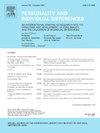自恋、自尊与“反愚蠢愤怒”的关系:基于反应面和横截面阈值模型的分析
IF 3.5
2区 心理学
Q1 PSYCHOLOGY, SOCIAL
引用次数: 0
摘要
近年来,社交媒体上的“反愚蠢”现象引起了广泛关注,个人对他人的“愚蠢行为”表现出强烈的不满。本研究探讨了“反愚蠢”背后的愤怒及其与自尊冲突和自恋类型(对抗性、神经质和工具性)的复杂关系。方法通过响应面分析、潜在剖面分析和横截面阈值效应分析,揭示各因素之间的内在联系。结果发现,当状态外显自尊与状态内隐自尊一致时,“反愚蠢愤怒”随两者的增加而降低。相反,当存在冲突且内隐自尊较高时,“反愚蠢愤怒”相对较低。潜在轮廓分析确定了四种自恋类型,中等水平组显示出显著的调节效应,“反愚蠢愤怒”随着两种自尊的增加而增加。此外,状态外显自尊仅在代理自恋低于阈值时显著抑制“反愚蠢愤怒”。研究强调,自尊冲突会加剧“反愚蠢愤怒”,而不同类型的自恋者起到不同的调节作用。中度自恋的个体在“反愚蠢”情境中表现出不稳定的情绪反应。工具性自恋的阈值效应表明,健康自恋和病态自恋的转变与自尊调节中断之间存在密切联系。本文章由计算机程序翻译,如有差异,请以英文原文为准。
The relationship between narcissism, self-esteem, and “anti-stupidity anger”: An analysis based on response surface and cross-sectional threshold models
Introduction
In recent years, the phenomenon of “anti-stupidity” on social media has drawn widespread attention, where individuals exhibit strong dissatisfaction with others' “foolish behaviors.” This study explores the anger behind “anti-stupidity” and its complex relationship with self-esteem conflict and narcissism types (antagonistic, neurotic, and instrumental).
Methods
By applying response surface analysis, latent profile analysis, and cross-sectional threshold effect analysis, the study reveals the intrinsic links between these factors.
Results
Findings show that when state explicit self-esteem aligns with state implicit self-esteem, “anti-stupidity anger” decreases as both increase. Conversely, when there's a conflict and implicit self-esteem is higher, “anti-stupidity anger” is relatively low. Latent profile analysis identifies four narcissism types, with the moderate-level group showing a significant moderating effect, where “anti-stupidity anger” increases with both self-esteems. Moreover, state explicit self-esteem only significantly inhibits “anti-stupidity anger” when agency narcissism is below the threshold.
Discussion
The study underscores that self-esteem conflict intensifies “anti-stupidity anger,” while different narcissism types play varied moderating roles. Individuals with moderate narcissism exhibit unstable emotional reactions in “anti-stupidity” situations. The threshold effect of instrumental narcissism suggests a close link between healthy and pathological narcissism transitions and self-esteem regulation disruptions.
求助全文
通过发布文献求助,成功后即可免费获取论文全文。
去求助
来源期刊

Personality and Individual Differences
PSYCHOLOGY, SOCIAL-
CiteScore
8.50
自引率
4.70%
发文量
577
审稿时长
41 days
期刊介绍:
Personality and Individual Differences is devoted to the publication of articles (experimental, theoretical, review) which aim to integrate as far as possible the major factors of personality with empirical paradigms from experimental, physiological, animal, clinical, educational, criminological or industrial psychology or to seek an explanation for the causes and major determinants of individual differences in concepts derived from these disciplines. The editors are concerned with both genetic and environmental causes, and they are particularly interested in possible interaction effects.
 求助内容:
求助内容: 应助结果提醒方式:
应助结果提醒方式:


